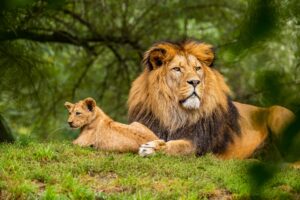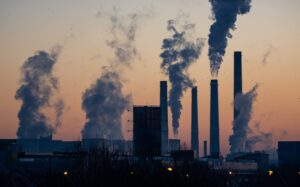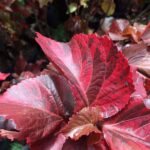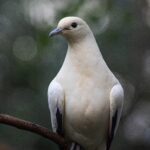WILDLIFE CONSERVATION: A MEANS TO PROTECT THE PLANETS BIODIVERSITY
Wildlife conservation is the practice of protecting plant and animal species and their habitats. It aims to ensure the survival of these species, maintain a healthy wildlife population and to restore, protect and enhance natural ecosystems. All things in an ecosystem are connected to one another and any change in one part of the ecosystem can affect another part. Activities such as agriculture, deforestation and hunting are major threats to wildlife and though we may not know it, these wildlife species have a lot of important roles to play in the sustenance of our ecosystem. In this article, we will explore the threats to wildlife, conservation methods and wildlife conservation efforts.

Threats to Wildlife
- Habitat Destruction: As human population increases, more lands are cleared for building, forests destroyed for agriculture, animals hunted for food. Habitat fragmentation breaks up a continuous tract of habitat, dividing large wildlife populations into several smaller ones. Habitat destruction and fragmentation reduces the space and resources available to wildlife making them vulnerable to extinction.

- Poaching: Poaching is the illegal hunting, capturing and killing of wild animals. It is mostly done for illegal wildlife trading purposes. Most times, the species hunted are endangered and it causes small populations to decline further. The hunting of elephants in Africa, rhinoceros and tigers for their tusks, skins and furs are an example.
- Over Exploitation: This is the harvesting of animals and plants at a rate faster than they can reproduce. If too many individual members of a species are taken then the species may not recover. An example is the overfishing of tuna and salmon which has led to a decline in fish sizes and fish numbers.
- Pollution: Pollutants negatively impact wildlife health. Burning of fossil fuels and industrial emissions release high levels of sulfur oxides (SOx). These chemicals damage plants and stunt their growth. They also contribute to acid rain which harms both terrestrial and aquatic ecosystems. Human activities such as mining, smelting, burning of fossil fuels and other industrial processes contribute to the rise in heavy metals such as mercury, arsenic and lead in the environment. When these chemicals are ingested in large doses, they can cause organ damage and cancer. Oil spills, wastewater and chemical runoff from factories find their way into our oceans and poison the waters affecting marine life.

- Climate change: Rising temperatures, rising sea levels, heatwaves, droughts which are all effects of climate change lead to habitat destruction. For instance, rise in water temperatures has caused the Great Barrier Reef to lose its colors and large parts of the reef to die. The Great Barrier Reef supports thousands of different species and marine mammals.
- Culling: Deliberate and selective killing of wildlife by governments for various purposes. Usually culling is done to control the population of a certain species. Examples include shark culling in Australia and wolf culling in British Columbia.
What can be done?: Wildlife Conservation Methods
- Government involvement: Government of different countries and international governmental organizations can help by making laws which help wildlife conservation. An example is the Endangered Species Act of 1973 passed by the US government to protect US species which are in danger of extinction. The Convention on International Trade in Endangered species of Fauna and Flora (CITES) was passed in 1973 also as part of an international agreement to prevent the global trade of endangered wildlife. In 1980, the World Conservation Strategy was developed by the IUCN in conjunction with the United Nation Environmental Program, World Wildlife Fund, UN Food and Agricultural Organization and UNESCO with its purpose being to promote the conservation of living resources important to humans. In 1992 also, the Convention on Biological Diversity (CBD) was agreed on at the UN Conference on Environment and Development as an international accord to protect the Earth’s biological resources and diversity.
- Non-governmental organizations: Non-governmental organizations such as The Nature Conservancy, The World Wildlife Fund, The Wildlife conservation society, Conservation International etc. these organizations help the wildlife conservation efforts by supporting zoos and aquariums, preserving wildlife communities, improve environmental education, promoting and developing alternatives to fossil fuels and so many more.
- Mass education: Educating people on the importance of preserving wildlife will go a long way in improving wildlife conditions. Most people need to be told the dangers of species going extinct and how their actions affect the environment negatively.
Wildlife conservation parks have been established in countries to protect the species living there. These are some of them:
- Corcovado National Park (Costa Rica)
- Galapagos National Park (Ecuador)
- Grand Canyon National Park (USA)
- Great Barrier Reef National Park (Australia)
- Jim Corbett National Park (India)
- Tikal National Park (Guatemala)
- The Kavongo Zambezi Transfrontier Conservation Area (Zambia, Botswana, Namibia and Zimbabwe)
- The Great Limpopo Transfrontier Park (South Africa, Mozambique and Zimbabwe)
- Yukon Delta National Wildlife Refuge (Canada)
Top inspiration wildlife conservation stories
Modern Day Wildlife Conservation (Video)





